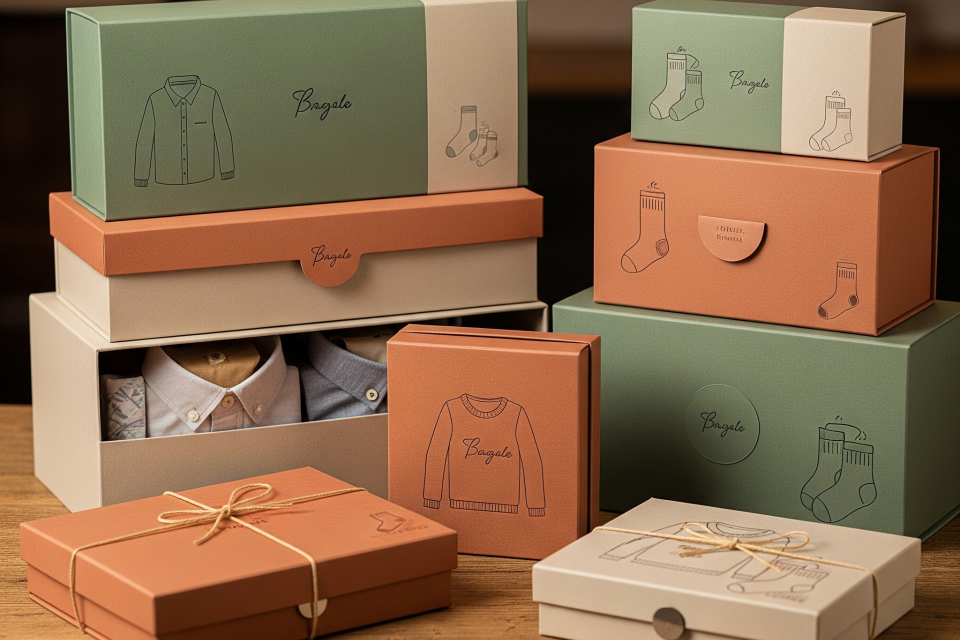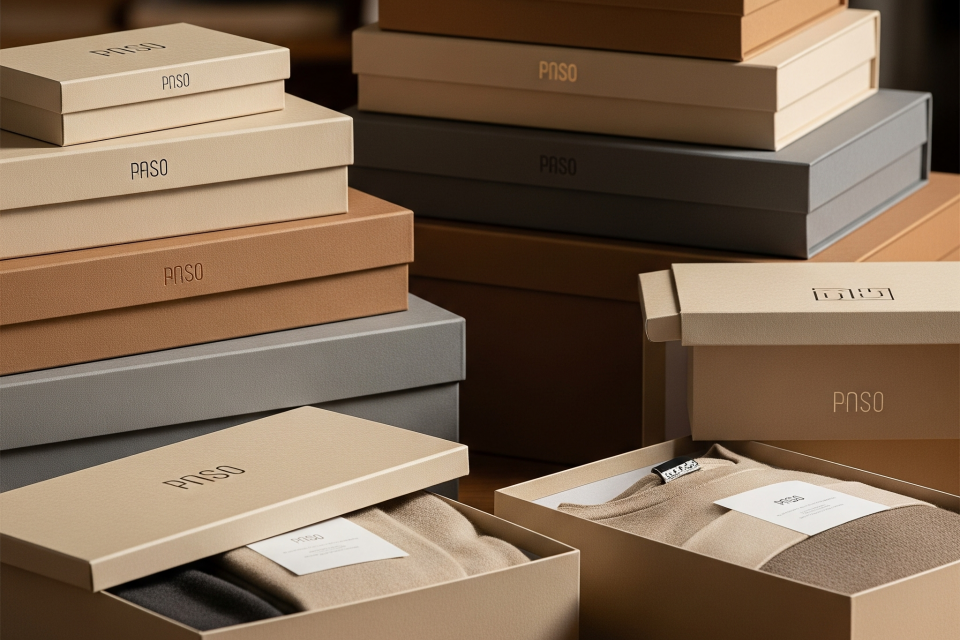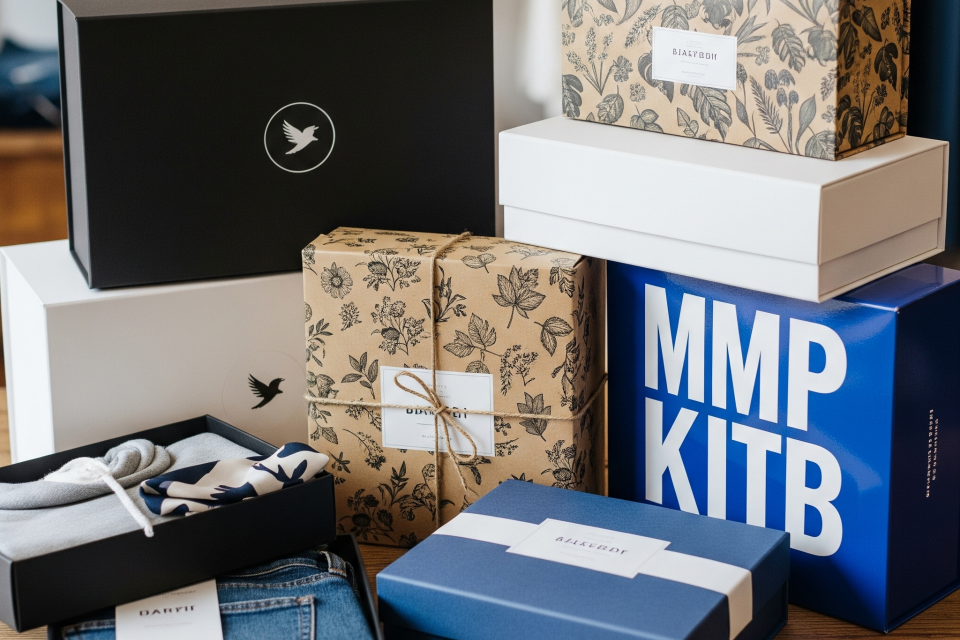Fashion Packaging Trends in Apparel Boxes
Fashion Packaging Trends in Apparel Boxes
Summary
Fashion Packaging Trends in Apparel Boxes refers to the evolving strategies and innovations in the design and materials used for packaging apparel, which play a significant role in brand identity and consumer engagement. This topic is notable due to the increasing emphasis on sustainability, aesthetic appeal, and technological advancements within the fashion industry. As e-commerce expands, the unboxing experience has become integral to consumer satisfaction, leading brands to invest in packaging that not only protects products but also enhances their overall presentation and environmental impact.
Current trends highlight a growing focus on sustainability, with brands opting for eco-friendly materials such as recycled paper, biodegradable plastics, and minimalistic designs that reduce waste. This shift is driven by consumer demand for environmentally responsible practices, as studies show that a significant percentage of shoppers prefer brands that demonstrate a commitment to sustainability. Furthermore, the rise of smart packaging technologies, such as NFC tags and QR codes, allows brands to provide consumers with real-time product information, enhancing transparency and engagement while reinforcing brand loyalty.
Aesthetic considerations remain crucial, as visually appealing packaging significantly influences consumer purchasing decisions. Luxurious designs and innovative packaging solutions are used to create memorable unboxing experiences, especially in the competitive landscape of online shopping. However, the desire for attractive packaging often conflicts with sustainable practices, presenting challenges as brands navigate the balance between consumer preferences and environmental responsibility.
Overall, the trends in fashion packaging reflect broader societal shifts towards sustainability and consumer engagement, marking a dynamic intersection between functionality, aesthetics, and ecological awareness that shapes the future of apparel marketing.

Historical Overview
The history of packaging is rooted in the fundamental need to protect goods during transportation, evolving significantly over centuries to encompass both functionality and brand messaging. Early examples of packaging can be traced back to ancient civilizations; for instance, the Chinese utilized mulberry bark sheets as early as the first or second century B.C. to wrap food, which can be considered a precursor to modern flexible packaging.
As trade expanded, particularly during the Industrial Revolution, the role of packaging evolved. Two major events significantly shaped the modern packaging landscape: the nineteenth-century universal exhibitions, which showcased industrially manufactured goods in packaged forms rather than bulk, and the rise of supermarkets in the mid-20th century. These retail outlets emphasized the need for attractive, competitive packaging designs that could capture consumer interest and ensure brand success.
In the 18th century, paper packaging became more prevalent, with specific industries using it to store products like tobacco. This period also marked the accidental invention of the carton material by Robert Gair in the 1870s, who created the first automatically made carton by combining cutting and creasing in one operation, laying the groundwork for what is known today as semi-flexible packaging.
The late 19th and early 20th centuries saw the emergence of more specialized packaging types, as advancements in materials like cardboard and paper led to improved durability and presentation. This era established the foundation for contemporary packaging solutions, particularly in the apparel industry where branding became an integral aspect of the consumer experience.
As the fashion industry grew, so did the complexity of packaging. Today, fashion packaging serves multiple purposes: it protects garments, enhances brand identity, and contributes to the overall customer experience. Elements such as tissue paper, ribbons, and high-quality materials are now common, particularly in e-commerce, where the unboxing experience is crucial to consumer satisfaction and brand perception.
Understanding the historical context of packaging reveals how it has transformed from a simple means of protection to a sophisticated marketing tool that plays a vital role in the consumer journey and environmental sustainability.
Current Trends in Fashion Packaging
The fashion packaging landscape is continuously evolving, influenced by shifts in consumer behavior, technological advancements, and growing environmental consciousness. Key trends currently shaping fashion packaging include a focus on sustainability, the integration of smart packaging technologies, and innovative design strategies that enhance the unboxing experience.
Sustainability in Packaging
Sustainability has become a central concern in the fashion industry, driving the demand for eco-friendly packaging solutions. Many brands are opting for materials that are recyclable, biodegradable, or made from renewable resources. Options such as recycled paper, compostable bio-plastic polybags, and 100% paper boxes are increasingly adopted to reduce environmental impact. Additionally, the use of eco-friendly inks, such as vegetable and soy-based alternatives, is gaining traction, as they are less harmful to the environment compared to traditional petroleum-based inks. Brands are also focusing on reducing single-use plastics and exploring innovative materials like corn starch and mushroom fibers for compostable packaging.
Smart Packaging Technologies
The rise of smart packaging is transforming how brands engage with consumers. Advanced technologies such as NFC tags and RFID chips are being incorporated into packaging, allowing for real-time information sharing about products. This trend not only enhances customer experience but also enables better traceability and tracking of products, promoting transparency and accountability within the supply chain. By leveraging these technologies, brands can provide consumers with information about product origins, care instructions, and sustainability efforts, thereby enhancing brand loyalty.
Aesthetic and Functional Design
The design of fashion packaging plays a crucial role in brand perception and customer satisfaction. Luxurious boxes, minimalist mailers, and elegant wraps are used to create a memorable unboxing experience, which has become an essential part of online shopping. Each packaging element, from garment bags to inner tissue paper, is designed not only for protection but also for storytelling and brand identity. Moreover, innovative design solutions aim to optimize logistical efficiency while maintaining aesthetic appeal.
As the fashion industry continues to adapt to these trends, packaging is expected to serve as a powerful tool for branding, consumer engagement, and sustainability initiatives.

Consumer Response to Fashion Packaging
Consumer response to fashion packaging has evolved significantly, influenced by increasing awareness of environmental issues and sustainability practices. Packaging is now viewed as a critical component of brand identity, with studies indicating that the design and materials used can heavily sway purchasing decisions.
Importance of Sustainable Packaging
A substantial majority of consumers now prefer brands that utilize sustainable packaging, with surveys revealing that 90% express a preference for eco-friendly options. This shift reflects a growing consciousness regarding environmental impacts, leading to a demand for accountability from brands. In fact, 73% of global consumers are willing to modify their purchasing habits to lessen their environmental footprint, highlighting the importance of integrating sustainable practices into packaging strategies.
Furthermore, brands that adopt transparent and sustainable packaging strategies tend to enhance their customer loyalty. Consumers are increasingly skeptical of traditional marketing claims, and companies that are open about their sustainability efforts often enjoy a competitive advantage.
The Role of Aesthetics
In addition to sustainability, the aesthetic appeal of packaging plays a crucial role in attracting consumers. The fashion industry, in particular, has recognized that custom packaging can significantly influence buying behavior. Aesthetically pleasing packaging not only enhances the perceived value of the product but also creates a memorable unboxing experience, especially in the realm of e-commerce. Luxurious designs and thoughtful presentations can effectively convey brand identity and quality, enticing customers to choose one product over another.
Consumer Engagement and Education
The demand for sustainable packaging also necessitates greater consumer education. While many consumers express a desire for environmentally friendly packaging, there exists a significant gap between attitude and action, often driven by misconceptions about sustainability or price sensitivity. Educating consumers about the materials used in packaging and the implications of their choices can empower them to make informed decisions that align with their values.
Moreover, addressing issues such as greenwashing is vital in fostering consumer trust. Shoppers must be able to confidently discern which brands genuinely commit to sustainability and which simply capitalize on the trend without substantive efforts.
Case Studies
Champagne Collet's Cuvée Esprit Couture
A notable example of innovative packaging in the luxury sector is Champagne Collet's Cuvée Esprit Couture. This product features a box adorned with tulle that evokes an Art Deco aesthetic, reflecting the brand's rich heritage since its founding in 1921. The bottle design incorporates elements of imitation leather and includes a cord that can double as a bracelet, showcasing how luxury packaging can blend functionality with aesthetic appeal. This trend of integrating textile and leather elements in packaging has seen a significant rise, paralleling the success of high-end fashion accessories such as luxury handbags, which serve as both status symbols and investment pieces.
Wholesome Culture
Wholesome Culture stands out in the sustainable fashion movement with its commitment to eco-friendly practices. The brand uses 100% organic cotton, recycled plastic bottles, and bamboo for its apparel. Each order is shipped in biodegradable or recycled packaging, further emphasizing their environmental responsibility. Additionally, Wholesome Culture collaborates with local artisans in Bali to produce activewear from recycled fishing nets and nylon. This approach not only reduces waste but also supports community initiatives, as the brand donates 10% of its profits to animal rescues and environmental organizations.
Minimalist Packaging Trend
The minimalist packaging trend in the fashion industry has gained traction as brands aim to reduce materials and waste. This design philosophy embraces simplicity and elegance, providing consumers with a sophisticated unboxing experience while minimizing environmental impact. By adopting minimalist packaging, brands can effectively reduce the amount of material used, which resonates well with environmentally conscious consumers and enhances their overall brand image.
Reusable and Returnable Packaging Initiatives
Another emerging trend is the adoption of reusable and returnable packaging, which encourages a circular economy mindset. Brands are increasingly investing in designs that allow packaging to be reused or returned, which not only decreases packaging waste but also fosters a stronger relationship with customers. This innovative approach highlights the importance of sustainability in modern branding strategies, making it clear that packaging can be a dynamic aspect of consumer engagement.
The Importance of Sustainable Packaging
Sustainable packaging practices are essential for brands looking to enhance their reputation as environmentally responsible entities. Companies that adopt such practices are often perceived more favorably by consumers, which can lead to increased loyalty and sales. The current consumer base is more environmentally conscious than ever, making sustainable packaging not just a trend but a necessary strategy for success in the fashion industry.
Challenges in Fashion Packaging
Fashion packaging plays a crucial role in the e-commerce sector, but it also faces several significant challenges that impact sustainability and consumer perception.
Environmental Impact
One of the primary challenges in fashion packaging is its contribution to environmental degradation. The prevalent use of single-use materials, particularly plastics, exacerbates issues like pollution and waste generation. Plastic packaging is a major source of plastic pollution in both terrestrial and marine environments, with a substantial portion of it ending up in landfills and ecosystems, harming wildlife and entering the food chain. The production of packaging materials, especially those made from petroleum, is energy-intensive and contributes to greenhouse gas emissions, further intensifying climate change concerns.
Waste Generation and Recycling
The fashion industry generates significant waste through its reliance on single-use packaging, which contributes to the increasing problem of landfill overflow. Even biodegradable materials, like paper and cardboard, pose challenges as they require resources for production and can release methane if not properly managed. The recycling rates for many of these materials remain low, with less than 15% of single-use plastics being recycled due to inadequate infrastructure and limited market demand for recycled materials. This inefficiency highlights the need for a systemic redesign of packaging solutions to promote sustainability.
Consumer Demand vs. Sustainability
Another significant challenge arises from the growing consumer demand for visually appealing packaging. While consumers care about the environmental impact of packaging, many are still drawn to elaborate designs that often incorporate non-recyclable materials. This desire for aesthetic packaging can conflict with the need for sustainable practices, as brands may prioritize immediate consumer appeal over long-term ecological responsibility. In fact, a notable percentage of consumers express concern about unclear labeling on packaging regarding sustainability, indicating a disconnect that brands must bridge.
Complexity of Global Supply Chains
The global nature of fashion supply chains complicates efforts to implement standardized, recyclable packaging. Variability in materials and designs across different markets can hinder effective recycling and increase waste. Furthermore, the lack of uniformity in regulations concerning packaging sustainability globally presents additional challenges for brands striving to improve their environmental footprint.
The Need for Innovation
Addressing these challenges requires innovative approaches to packaging design and materials. Brands are increasingly recognizing the importance of adopting eco-friendly materials, such as recycled paper and plant-based plastics, as part of their commitment to sustainability. However, the transition is often slow and may require significant investment in new processes and materials to align with consumer expectations and regulatory standards. As consumers become more aware of environmental issues, fashion brands must adapt to meet these demands while mitigating their impact on the planet.

Future Directions
As the fashion industry continues to evolve, the future of packaging in apparel boxes is set to reflect broader societal trends and consumer demands. One significant direction is the rise of maximalist designs, which contrast with the minimalist packaging styles that have dominated in recent years. This shift is driven by a collective yearning for nostalgia and familiarity amidst ongoing global challenges such as inflation and climate change. Bright colors, playful imagery, and bold graphics are expected to dominate packaging aesthetics in 2023, offering consumers a sense of optimism and escapism.
Sustainability remains a critical focus in the packaging design landscape. The introduction of Extended Producer Responsibility (EPR) laws in several U.S. states by 2025 is prompting brands to reconsider their material choices and design processes. Companies are increasingly prioritizing eco-friendly materials and innovative technologies to align with consumer values, enhancing brand loyalty and trust. Sustainable packaging practices are not just about compliance; they also serve as a unique selling point that can differentiate brands in a crowded market.
Technological advancements are also shaping the future of fashion packaging. The integration of artificial intelligence (AI) and smart packaging technologies, such as QR codes and NFC tags, enables brands to create more engaging and informative consumer experiences. These innovations facilitate communication about sustainability efforts and product information, enhancing customer engagement and satisfaction. As digital experiences blend with physical products, packaging design is becoming an essential part of the overall brand narrative.
Moreover, evolving consumer behaviors, influenced by the COVID-19 pandemic, are reshaping expectations for packaging. E-commerce's growth has led to increased demand for packaging that is not only visually appealing but also functional and protective during transit. The focus is shifting toward creating a memorable unboxing experience that reinforces quality and exclusivity, encouraging repeat purchases.
